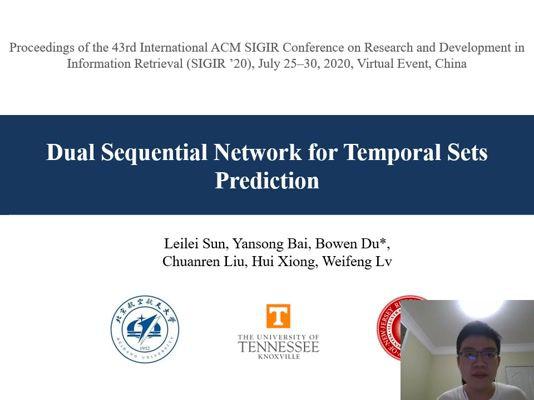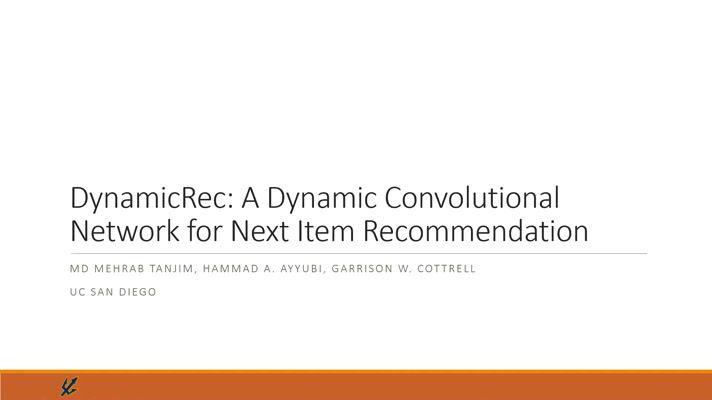Abstract:
Many sequential behaviors such as purchasing items from time to time, selecting courses in different terms, collecting event logs periodically could be formalized as sequential sets of actions or elements, namely temporal sets. Predicting the subsequent set according to historical sequence of sets could help us make better producing, scheduling, or operating decisions. However, most of the existing methods were designed for predicting time series or temporal events, which could not be directly used for temporal sets prediction due to the difficulties of multi-level representations of items and sets, complex temporal dependencies of sets, and evolving dynamics of sequential behaviors. To address these issues, this paper provides a novel sets prediction method, called DSNTSP (Dual Sequential Network for Temporal Sets Prediction). Our model first learns both item-level representations and set-level representations of set sequences separately based on a transformer framework. Then, a co-transformer module is proposed to capture the multiple temporal dependencies of items and sets. Last, a gated neural module is designed to predict the subsequent set by fusing all the multi-level correlations and multiple temporal dependencies of items and sets. The experimental results on real-world data sets show that our methods lead to significant and consistent improvements as compared to other methods.










































